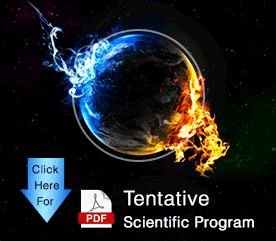
Biography
Biography: Essam E Khalil
Abstract
Energy-efficient building codes are meant to guide building designers, construction managers and real estate operators in promoting best energy efficiency practices in the construction industry. The built environment is designed as a shelter for humans as well as a filter to control environmentally undesirable conditions. Building technology also involves carbon emissions during the transport of materials and the generation of electricity used for most buildings’ applications. Building energy codes and labeling can significantly reduce such carbon emissions. To improve living conditions in built environments, thermal management is applied through air-conditioning and refrigeration technologies. Some hydrofluorocarbons (HFCs), now being used as refrigerants, have a high global warming potential (GWP). All countries must keep their commitments under the Paris Agreement to pursue aggressive cuts in greenhouse gas emissions. Yet, even with full implementation, global temperatures will likely increase by 2 to 4.5 degrees Celsius. The best and quickest way to prevent climate destabilization is to cut back emissions of super climate pollutants that make a disproportionate contribution to global warming despite being produced in much smaller quantities than carbon dioxide. These include ground-level ozone and black carbon soot from sources such
as power plants and diesel engines, as well as methane (often from natural gas systems and agriculture) and HFC refrigerants used in airconditioning and other cooling systems. The October 2016 Kigali Amendment to the Montreal Protocol, has now committed all Parties to phasing down HFC use. These four super pollutants are between 28 and 4,000 times more potent than carbon dioxide as climate warmers. And because some are short-lived, slowing their release into the atmosphere can curb warming quickly. Naturally occurring refrigerants are one type of alternatives to fluorocarbon refrigerants. Natural refrigerants include carbon dioxide, ammonia and hydrocarbons which have zero ozone depletion potential (ODP). These refrigerants have a broad range of application, including in cold storage and freezing as well as commercial and industrial refrigeration. Although natural refrigerants have been used for more than 100 years, they are more relevant today than ever before. Given the need for refrigerants having low GWP, the use of natural refrigerants can improve the environmental performance of refrigeration systems. Building codes comprise instructions for designing and implementing air-conditioning and refrigeration systems, but should also include requirements to address flammability issues and explosion risks. Building systems designers should balance the use of low-GWP with non-ozone depleting substances (ODS) in aiming for an energy-efficient built environment.

